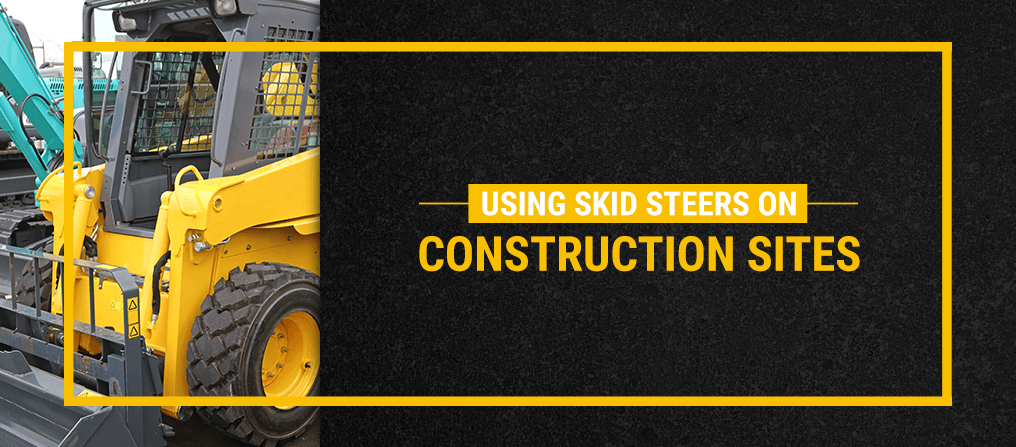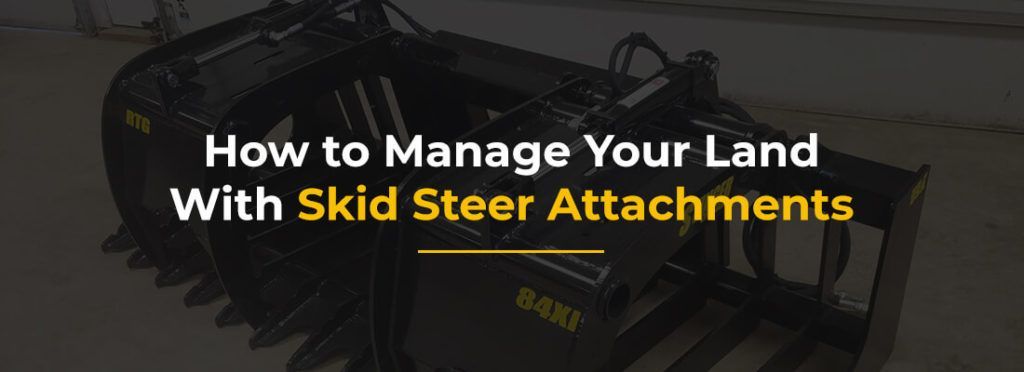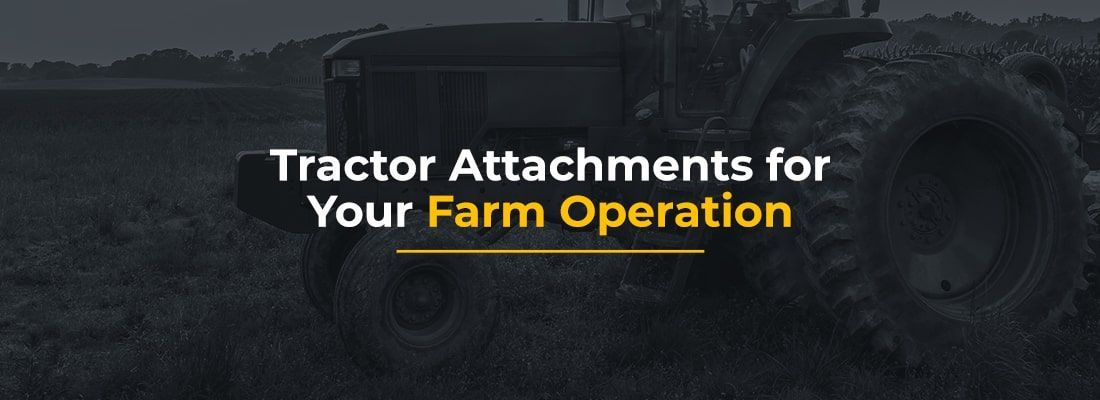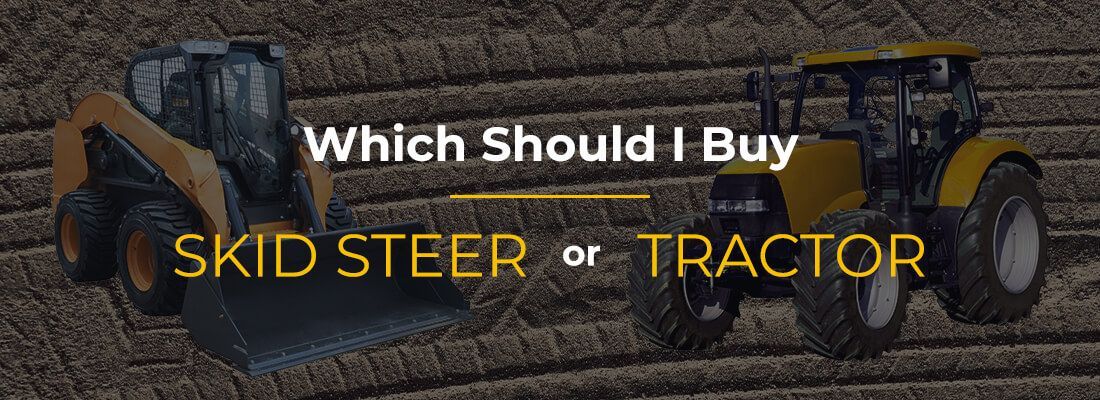
Using Skid Steers on Construction Sites

Using Skid Steers on Construction Sites
Skid steers are compact, versatile, engine-powered machines mainly used for digging. They’re lightweight and maneuverable, and their arms can connect to various tools designed for many different construction and landscaping projects. Their primary characteristics are:
- Locked wheels: They have either two tracks or four wheels. The back and front axles on either side are locked in sync with one another, although you can operate them separately from the two wheels or track on the machine’s opposite side.
- Differential steering: You cannot change the angle of the wheels or tracks, meaning they will always point straight ahead. To turn a skid steer, you must increase the speed of the wheels on one of the sides, which will cause the wheels to drag or skid over the ground as the skid steer rotates in the other direction. This process is known as differential steering and allows the driver to perform zero-degree radius turns, which are useful for tasks requiring high precision.
- Numerous attachments: Perhaps the most defining characteristic of skid steers is the wide variety of attachments you can outfit them with, which makes many tasks possible. The skid steer’s standard attachment is a bucket, which lifts and moves heavy materials.
- Various sizes: Skid steers are also available in a range of sizes, each of which is suitable for different applications.
Below, we’ll discuss the many uses of skid steers in construction, including the various skid steer capabilities you can take advantage of when you equip them with certain attachments.

Why Are Skid Steers a Good Choice for Construction Sites?
On construction sites, you often need to move large amounts of heavy materials that would be dangerous, impractical and or even impossible to maneuver with manpower alone. Construction equipment like skid steers assist in transporting these materials by keeping the process safe and convenient. The skid steer’s relatively compact size also makes it preferable to larger vehicles like excavators and backhoes when working in more confined spaces. Common skid steer uses include:
- Demolition: A skid steer is an excellent choice for both exterior and interior demolitions. When outfitted with demolition shears, skid steers can help demolish concrete, drywall, flooring and various other materials. Its precision and compact size make it especially valuable when working in tight spaces, like when you’re demolishing a home surrounded by other nearby houses.
- Roadwork: Skid steers are also useful for building and maintaining roads. There are numerous ski steer attachments available for roadwork, including ones for mixing cement, demolishing, paving, patching and grading.
- Excavation: As skid steers can move earth easily, they’re frequently used for jobs like excavating, trenching and digging. You can use many attachments for these tasks, including augers, backhoes, wheel saws and trenchers. Depending on the attachment you have, your skid steer can dig anything from narrow portholes to entire foundations.
- Backfilling and grading: You can also use your skid steer for filling in holes, leveling the ground and aerating the earth. A bucket attachment works well for these jobs, although grading bars and rake attachments work even better for leveling jobs. These attachments also allow you to scoop rocks up while leveling the ground without leaving behind large trenches.
- Loading: Equipped with a bucket attachment, a skid steer is helpful for transporting materials and equipment from one part of the job site to another. If you have to transport materials, consider using a vertical lift skid steer instead of a radial one, as the former can handle heavier loads and reach higher.

What Size Skid Steer Is Best?
Skid steers come in three different sizes: small, medium and large. The best size for you depends on several factors, including what your application is and how tight your space is. We’ll cover the best uses for each size below:
1. Small
While all skid steer models are known for their maneuverability, small models are exceptionally easy to navigate. They can fit in tight places that other heavy construction vehicles cannot access, making them ideal choices for jobs such as interior demolition.
Small skid loader models are also useful for performing site development, landscaping an area and building smaller structures. For instance, they’re regularly used to build houses in neighborhoods because they can fit in-between homes and go through gates. Smaller models are also commonly used for underground construction.
2. Medium
Most skid steers are medium-sized and are used for general construction site applications. A construction team will usually upgrade from a small- to medium-sized skid steer when they require a larger bucket size and more power. Although a medium skid loader can’t fit into a tight space like a small one, it’s still very maneuverable and can accommodate a wide variety of jobs that bigger construction vehicles cannot accomplish.
3. Large
Large models are generally reserved for large-scale construction projects. They’re also used for grading, road-building and excavating, and they are valued for how effortlessly they can lift and transport pallets of extremely heavy materials such as brick.
Large skid steers become much more versatile with attachments. Forestry cutters, wheel saws and planers are just a few examples of attachments that can expand the versatility of large models.

Which Skid Steer Attachments Are Used in Construction Projects?
If you’re planning to use your skid steer for construction, you can perform a wide range of tasks with the help of our many attachments. The most commonly used attachments for construction projects include the following list.
Augers
This popular skid steer attachment makes digging precise holes much easier. Shaped like a corkscrew, augers can dig deep down into the dirt without damaging the surrounding soil. There are three options available — basic, heavy-duty and extreme duty. The one you choose should depend on factors such as the ground’s condition, the hole size and the hole’s depth. A direct drive, planetary drive or chain powers the rotation. The chain provides the least power, but it still works well for most digging jobs.
Trenchers
Trenchers are useful in the fields of construction, farming and landscaping. This balanced, powerful attachment is used to dig narrow, straight trenches at varying depths. All skid steer sizes support trenchers that can dig at least 3 feet deep, whereas larger options can dig trenches up to 5 feet deep. Trenchers are commonly used for drain pipes, utility lines, sprinkler systems and footing.
Material Buckets
Bucket attachments perform various tasks and handle large quantities of loose, light material , including:
- Snow
- Mulch
- Wood chips
- Rocks
- Gravel
- Grain
- Fertilizer
- Topsoil
- Sand
Material bucket attachments feature a high back, which can push materials and pile them up for handling. Additionally, the bucket’s high sides can cut into large piles of material to make scooping more efficient. You can use a material bucket for many different industries and applications, including industrial work, ranching and hobby farming. With this attachment, you can complete tasks like mulching, planting, landscaping, transporting materials and digging trenches.
Rock Buckets
Rock bucket attachments are great for picking up rocks and debris as you sift out dust and dirt, which is possible due to the bucket’s sifting mechanism. You can use rock buckets in various ways on a construction site, including:
- Land clearing: When the site is being prepared, large rocks need to be separated from the dirt. Rock buckets are perfect for this task.
- Material handling: Rock buckets can carry denser materials such as wood and rocks.
- Grading: When grading, a rock bucket will help you achieve a clean finish by clearing away rocks and debris.
Grapple Buckets
Grapple buckets feature independent grappling to secure uneven loads , such as rock, brush, debris, scrap metal or logs. These attachments are also useful for construction and demolition projects. You can easily use one to clear demolished materials and rocks to prepare the site for your project. Grapple attachments are commonly used in various industries because of their many benefits, including their versatility and easy assembly.
Tooth Buckets
Tooth buckets combine the versatility of material buckets with heavy-duty teeth and a structural build. These features make them great for:
- Digging: The tooth bucket’s specialty is heavy-duty digging, which makes it an essential tool to have on hand when you need to dig up earth.
- Grading: Tooth buckets often have teeth that remain level with the cutting edge, which makes grading easier when preparing land.
- Hauling materials: The bucket’s industrial-grade construction and deep bottom makes it easy to carry heavy materials like rocks. You can also use it as a regular hauling bucket, meaning you can transport lighter materials such as mulch and feed.
- Clearing land: If you need to remove debris, rocks or snow from your land, a tooth bucket attachment will get the job done.
Concrete Buckets
By attaching a concrete bucket to your skid steer, you can get concrete into harder-to-reach places, which will save you time and money. You’ll also avoid the fatigue of using a wheelbarrow to pour concrete. This concrete bucket also doubles as a mixing bucket. Additionally, our concrete mixer can mix many materials other than concrete, including animal feed, fertilizer and mulch.
Pallet Fork
A pallet fork attachment allows you to move bagged, bulky or palletized materials easily and quickly. You can also use it for installing structures such as fences. When you set a fence up, the pallet fork can help you carry posts and, when combined with a post digger, you can install the fence quickly. The pallet fork’s lifting height also makes it excellent for performing work on roofing, signs and many other structures.
Land Planes
Land planes skim the very top layer off the ground, passing the material over their blades from front to back, which makes these tools ideal for land preparation and clearing. The attachment makes the following activities much easier:
- Smoothing or grading land: If you have to grade or level terrain on a construction site, farm or driveway, a land plane attachment will do an excellent job. It covers a wide area and creates a finish that’s smoother than that from a bucket.
- Peeling sod: Land planes also clear sod, allowing you to plant or prepare the land from scratch. These attachments cut below the sod, peeling it continuously from the ground.
- Tilling and aerating soil: When planting season arrives, use a land plane together with a hydraulic scarifier. Doing this will allow you to dig deeper for aeration and tilling.
- Breaking up tough ground: With the hydraulic scarifier, you can give your land plane the necessary heft to break into compacted ground.
Brooms
Also known as a sweeper attachment, brooms are useful for clearing or cleaning the ground. In construction, they’re great for scraping off caked mud from the driveway or road. You can also use them to spread materials across a site evenly.
There are two kinds of brooms available for skid steers — angle and pickup brooms:
- Angle brooms: The angle brooms we offer are versatile and will move in whichever direction you need them to due to their ability to rotate 30 degrees to the right or left. They also come in 72-, 84- and 96-inch widths, meaning they can accommodate spaces of any size. These attachments are excellent for various locations, including warehouses, machine sheds and parking lots, and they’re often used for removing or containing debris on construction sites.
- Pickup brooms: Pickup broom attachments are even more effective at cleaning up, thanks to their cutting edge and bucket. We offer this attachment in 60-, 72- and 84-inch widths to accommodate your space. Pickup brooms can also attach to telehandlers, backhoes and tractors. The cutting edge and bucket make the cleaning process simpler because they reduce the need for additional tools. The blade cuts through dry mud easily, and the bucket functions as a dustpan. This attachment is valuable in numerous industries, including construction, municipal building and landscaping.
Find the Attachments You Need for Your Skid Steer
When you purchase an attachment for your skid steer, you’re investing in your future. At Stinger Attachments, we want to be a part of your future by helping your business prosper. When you buy from Stinger, you will enjoy the following unique benefits:
- Direct-to-buyer pricing: We handle all our products’ manufacturing, sales and shipping, which is why we can offer lower prices for our premium items. With our bundled and flat-rate shipping options, you can save yourself even more on your purchase.
- Long warranty: Our skid steer attachments all come with a one-year warranty — because we want you to have the same confidence in our products that we do.
- Skid steer specialists: Our team boasts many years of experience in making attachments for skid steers, and if you need assistance, they are available to speak with you over the phone.
If you have any questions about the attachments we offer or would like some guidance for your next skid steer project, feel free to reach out to us by calling 507-273-7497 or filling out our contact form.
The post Using Skid Steers on Construction Sites appeared first on Stinger Attachments.
You might also like



Book a Service Today
We will get back to you as soon as possible
Please try again later
Quick & Reliable
Give us a call to discuss how Echo Equipment can complete your fleet!
Location
104 Jackson St, Sumner, IA 50674, United States of America
All Rights Reserved | Echo Eqpt

